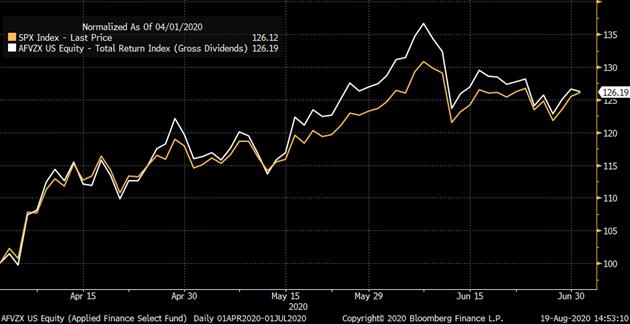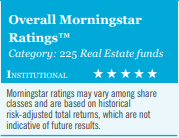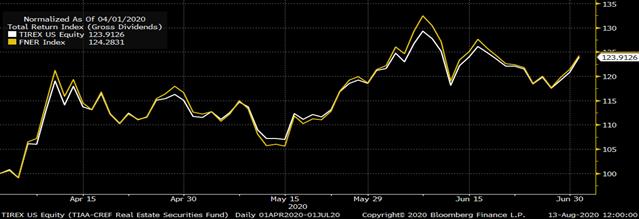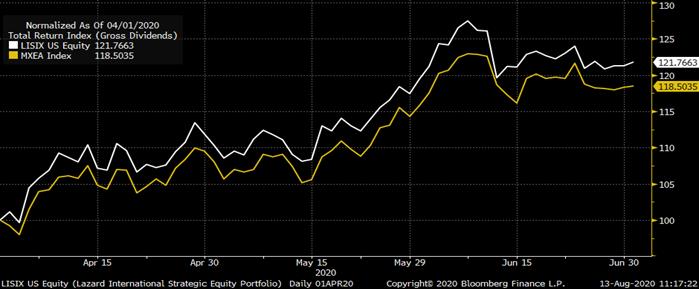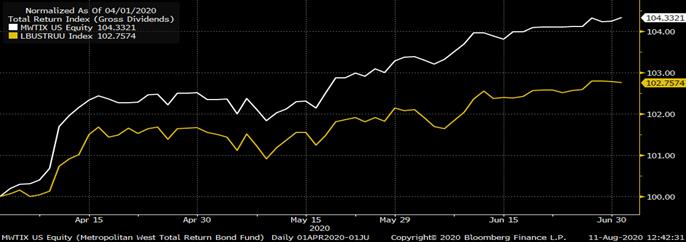Current Price: $54 Price Target: $70
Position Size: 3.5% TTM Performance: 3.5%
Key takeaways:
· Revenue beat and EPS missed. Lower EPS was driven by a tax adjustment. They didn’t issue guidance for Q2, but top and bottom lines well exceeded internal plans.
· Better than expected SSS aided by strong Home category sales – SSS for open-only stores were -3% w/ HomeGoods/HomeSense SSS at +20% and Marmaxx at -6%
· Weakening trends at re-opened stores – they guided SSS trends for Q3 well below Q2, but low inventory levels (which should improve) are a big factor.
· Seeing extremely plentiful inventory buying opportunities bodes well for the future.
· Despite the Covid related headwinds they face right now, management’s tone on the call was extremely positive about long term outlook and positioning.
· CEO Ernie Herrman said…”the way all of the retailers had to shut down, has resulted in tremendous pack-away opportunities which our merchants have really recently started taking advantage of…we have the utmost of confidence that as we go through this… given all the store closures we just think we are going to begin to take major market share.”
Additional Highlights:
· Sales declined -31.8% YoY vs consensus of -33%, with “open-only” SSS of -3%.
· 2Q loss includes a significant negative impact from tax expense. The tax expense was primarily driven by a tax loss carry back benefit that was booked in Q1 and was reversed in 2Q due to their better than expected results.
· For Q3, they are planning overall open-only SSS to be down -10% to -20%. This is in-line with the sales trends they’ve seen since the middle of July and through August month-to-date. This reflects lighter inventory, weaker foot traffic at Marmaxx and an anticipated slower back-to-school selling season. Initial re-opening trends benefited from pent-up demand and, to some degree, from stimulus, but trends weakened in large part to lower inventory.
· Lighter inventory negatively impacting SSS trends…this is a short-term issue
o Lower inventory is Covid related and not related to lack of inventory availability. Inventory issue exacerbated by stronger than expected sales in 2Q as it created a need to replenish store inventories faster than anticipated.
o Seeing extremely plentiful inventory buying opportunities which should benefit them in future quarters. Seeing new vendors across all categories reach out to do business w/ them.
o Covid is causing logistical bottlenecks in inventory flowing to stores due to supply chain and logistics challenges with some third-party affiliates.
o Vendors and transportation providers ramping their businesses back up caused some logistical delays with merchandise arriving to distribution centers.
o As retailers stopped ordering and Covid shut down manufacturing, the flow of goods was disrupted which had prevented them from chasing hot categories the way they normally would. This should be a short-term issue w/ inventory in “hot” categories continuing to improve as manufacturing resumes.
o They also lowered store inventory to promote social distancing with wider aisle spacing and fewer racks.
o The inventory they do have is turning quickly which is a positive sign.
· Traffic at Marmaxx is weak – This is also weighing on SSS trends. Covid is causing lower foot traffic as some customers are still not comfortable coming to stores. However the customers that are coming are buying and basket sizes are up. States where there have been a second wave are negatively impacting traffic trends. As traffic slowly normalizes and inventory improves, they are well positioned.
· Adjusting inventories to align w/ current category demand trends…
o Home is extremely strong. Shifting more inventory to home.
o Apparel trends shifting as people are not buying business clothes. They are working to adjust their inventory to these category trends.
o They are pivoting to “hot categories” – this has always been one of TJXs advantages. Centralized merchandising combined with high turns and constantly flowing goods to stores allows them to be nimble with inventory and respond to current trends. This has been a key part of their ability to drive LT positive SSS trends for decades. Covid has disrupted this, as discussed above, but this should be a short-term issue.
· Merchandise margins were strong as markdowns were significantly lower than anticipated due to the greater than expected demand.
· Nearly all stores worldwide open for business by the end of June as expected. Stores were only open a little more than two-thirds of the second quarter.
· As competitors close stores confident they can capitalize on real estate opportunities and continue to take share.
· No guidance other than SSS.
· Dividend still halted, but committed to resuming.
· Valuation: Balance sheet remains strong. The stock has recovered from troughs and is now down ~10% YTD. Valuation reasonable at >4% FCF yield on 2019.
Sarah Kanwal
Equity Analyst, Director
Direct: 617.226.0022
Fax: 617.523.8118
Crestwood Advisors
One Liberty Square, Suite 500
Boston, MA 02109
$TJX.US
[tag TJX]
[category earnings]


